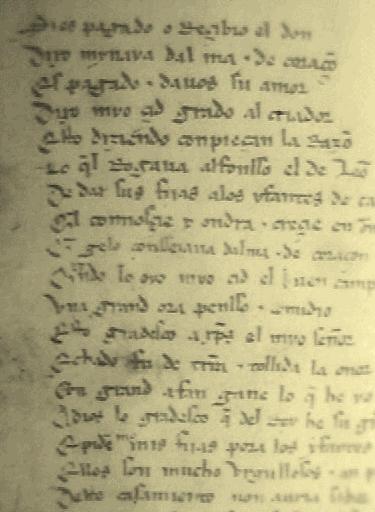|
Old Gallo-Italic Language
Old Gallo-Italic, also referred as Old Lombard, or Old Northern Italian is a Gallo-Romance languages, Gallo-Romance language spoken from 900 until 1500. The language is similar to Old Occitan, which was spoken around the same area. Most texts were written in the Lombard koiné. History Before the 13th century Before the 13th century, the literary language in northern Italy was Old Occitan, being prominent in the 12th century. The first text in a vernacular, in an early form of Piedmontese language, Piedmontese, is in the Church of Santa Maria Maggio in Vercelli, dating from 1040. Another text from 1106 is in the Church of Sant'Evasio in Casale Monferrato. One of the works of Raimbaut de Vaqueiras, , featured early Genoese dialect, Genovese Ligurian. The ''sermones subalpini'' was a text in early Old Piedmontese from the 12th century, and is a document devoted to the education of the Knights Templar stationed in Piedmont. 13th and 14th centuries Around the 13th century, man ... [...More Info...] [...Related Items...] OR: [Wikipedia] [Google] [Baidu] |
Northern Italy
Northern Italy (, , ) is a geographical and cultural region in the northern part of Italy. The Italian National Institute of Statistics defines the region as encompassing the four Northwest Italy, northwestern Regions of Italy, regions of Piedmont, Aosta Valley, Liguria and Lombardy in addition to the four Northeast Italy, northeastern Regions of Italy, regions of Trentino-Alto Adige/Südtirol, Trentino-Alto Adige, Veneto, Friuli-Venezia Giulia and Emilia-Romagna. With a total area of , and a population of 27.4 million as of 2022, the region covers roughly 40% of the Italian Republic and contains 46% of its population. Two of Italy's largest metropolitan areas, Milan and Turin, are located in the region. Northern Italy's GDP was estimated at Euro, €1 trillion in 2021, accounting for 56.5% of the Italian economy. Northern Italy has a rich and distinct culture. Thirty-seven of the fifty-nine List of World Heritage Sites in Italy, World Heritage Sites in Italy are found in the re ... [...More Info...] [...Related Items...] OR: [Wikipedia] [Google] [Baidu] |
Vulgar Latin
Vulgar Latin, also known as Colloquial, Popular, Spoken or Vernacular Latin, is the range of non-formal Register (sociolinguistics), registers of Latin spoken from the Crisis of the Roman Republic, Late Roman Republic onward. ''Vulgar Latin'' as a term is both controversial and imprecise. Spoken Latin existed for a long time and in many places. Scholars have differed in opinion as to the extent of the differences, and whether Vulgar Latin was in some sense a different language. This was developed as a theory in the nineteenth century by François Just Marie Raynouard, Raynouard. At its extreme, the theory suggested that the written register formed an elite language distinct from common speech, but this is now rejected. The current consensus is that the written and spoken languages formed a continuity much as they do in modern languages, with speech tending to evolve faster than the written language, and the written, formalised language exerting pressure back on speech. ''Vulgar ... [...More Info...] [...Related Items...] OR: [Wikipedia] [Google] [Baidu] |

